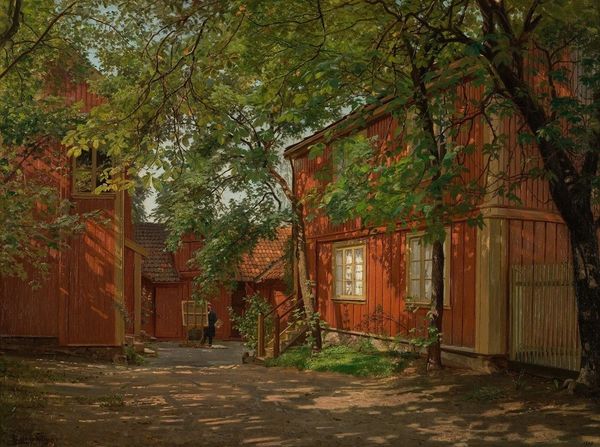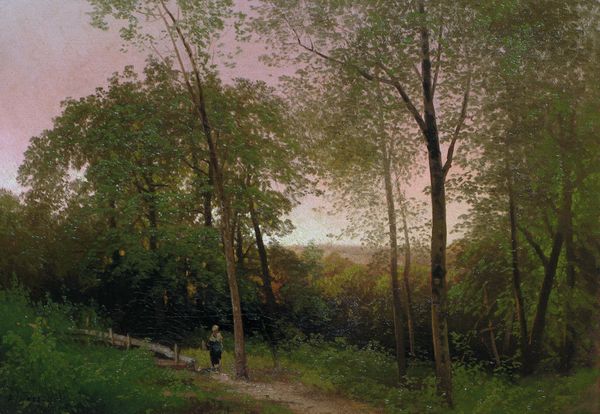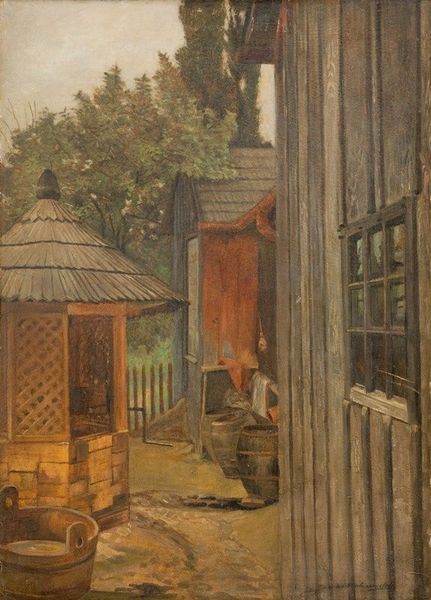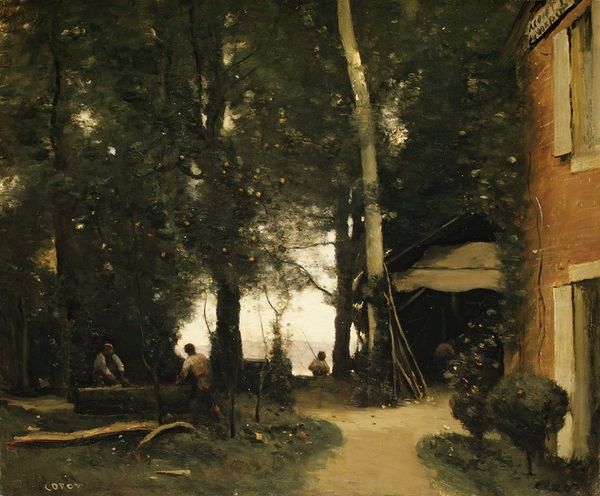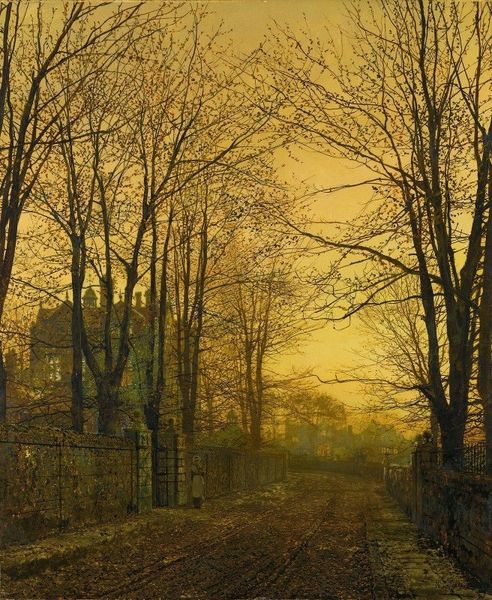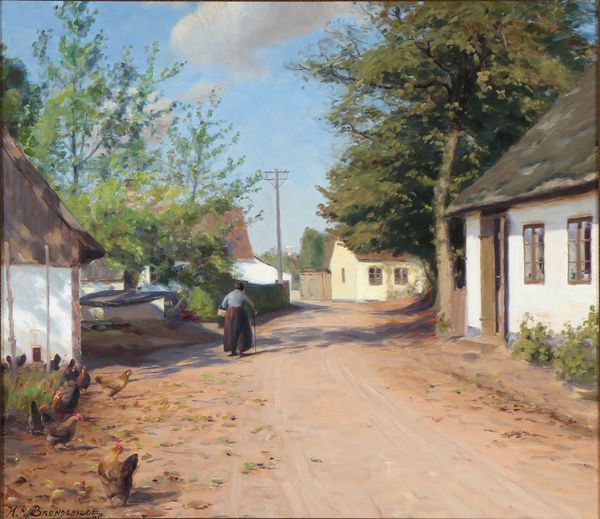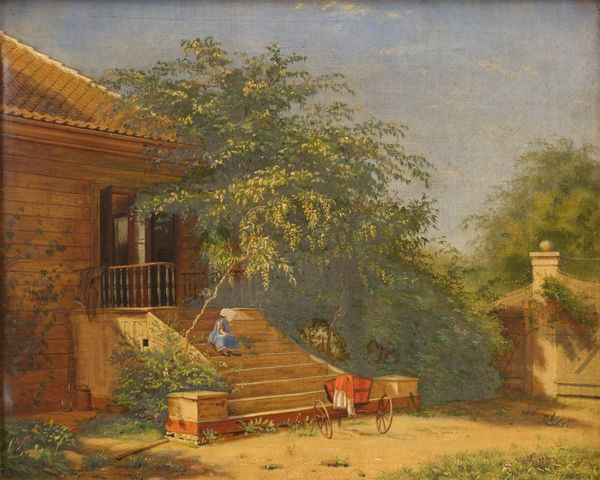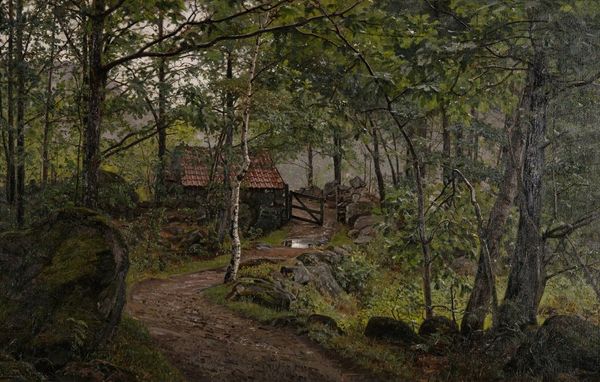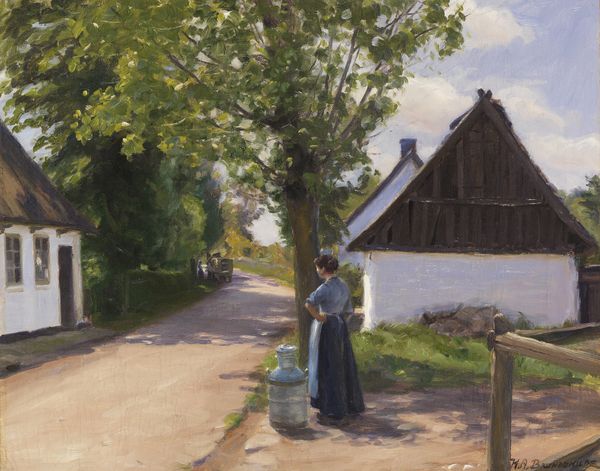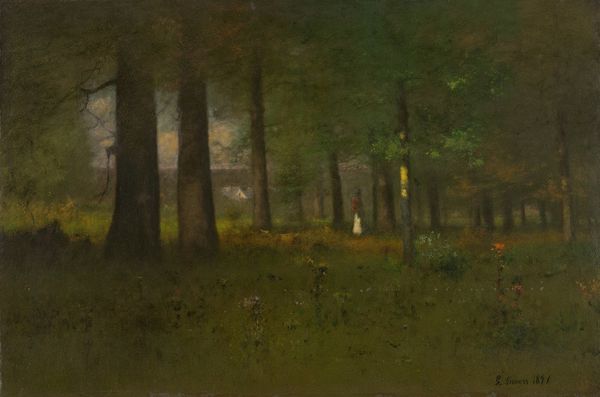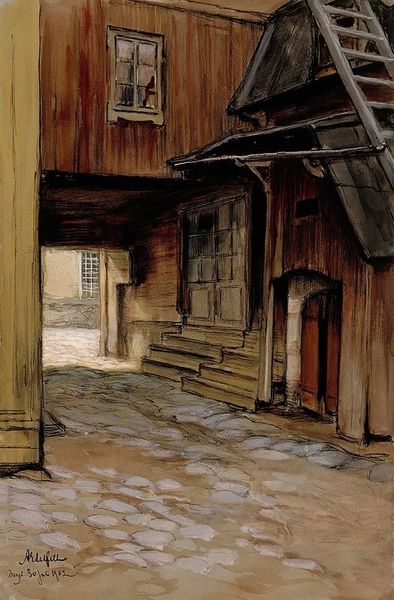
Copyright: Public Domain: Artvee
Editor: This is "Aftenavisen kommer, Majorstuveien 8," painted around 1900 by Amaldus Nielsen. It feels incredibly tranquil – a quiet, sun-dappled street scene. I'm struck by how ordinary it is, and yet it holds my attention. What do you see when you look at this piece? Curator: The everyday quality is precisely what captivates me. Nielsen wasn't painting grand historical events or portraits of the elite. He's capturing a fleeting moment in time, a specific place in Oslo at the turn of the century. Consider how the painting’s title translates roughly to "The Evening Paper Arrives". We're witnessing a society increasingly informed by mass media. It reflects a shift in cultural consciousness. What do you notice about the architecture and the setting? Editor: It looks so…domestic. The red-painted wooden houses, the overgrown greenery – it suggests a comfortable, lived-in space, perhaps a middle-class suburb? The person far in the background really adds a personal element. Curator: Exactly. And plein-air painting like this wasn't just about aesthetics; it was about authenticity. Nielsen is going out into the world, directly engaging with his environment, much as Impressionist painters did in France, capturing their everyday lives and transforming that into the public imaginary via exhibitions and critical dialogue around modern life. What political statements are those paintings, with people gathering together in community for leisure? Can you relate them back to Nielsen's quiet painting here in Norway? How are these images used as markers for collective identity, and as artifacts in our culture? Editor: I hadn’t really considered it in that light before – as part of a larger social commentary. Now, the "ordinary" feels much more deliberate and loaded. The way these artworks build new meaning with repeated viewings! Curator: Yes, these ordinary scenes become valuable documents of cultural change. It's more than just a pretty picture; it’s a reflection of a society in transition, and how art shapes collective memory. Editor: That’s so interesting. It really changes my understanding of the painting and makes me think more critically about how landscapes reflect the wider societal forces at play.
Comments
No comments
Be the first to comment and join the conversation on the ultimate creative platform.
